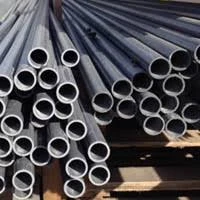
-
 Afrikaans
Afrikaans -
 Albanian
Albanian -
 Amharic
Amharic -
 Arabic
Arabic -
 Armenian
Armenian -
 Azerbaijani
Azerbaijani -
 Basque
Basque -
 Belarusian
Belarusian -
 Bengali
Bengali -
 Bosnian
Bosnian -
 Bulgarian
Bulgarian -
 Catalan
Catalan -
 Cebuano
Cebuano -
 China
China -
 China (Taiwan)
China (Taiwan) -
 Corsican
Corsican -
 Croatian
Croatian -
 Czech
Czech -
 Danish
Danish -
 Dutch
Dutch -
 English
English -
 Esperanto
Esperanto -
 Estonian
Estonian -
 Finnish
Finnish -
 French
French -
 Frisian
Frisian -
 Galician
Galician -
 Georgian
Georgian -
 German
German -
 Greek
Greek -
 Gujarati
Gujarati -
 Haitian Creole
Haitian Creole -
 hausa
hausa -
 hawaiian
hawaiian -
 Hebrew
Hebrew -
 Hindi
Hindi -
 Miao
Miao -
 Hungarian
Hungarian -
 Icelandic
Icelandic -
 igbo
igbo -
 Indonesian
Indonesian -
 irish
irish -
 Italian
Italian -
 Japanese
Japanese -
 Javanese
Javanese -
 Kannada
Kannada -
 kazakh
kazakh -
 Khmer
Khmer -
 Rwandese
Rwandese -
 Korean
Korean -
 Kurdish
Kurdish -
 Kyrgyz
Kyrgyz -
 Lao
Lao -
 Latin
Latin -
 Latvian
Latvian -
 Lithuanian
Lithuanian -
 Luxembourgish
Luxembourgish -
 Macedonian
Macedonian -
 Malgashi
Malgashi -
 Malay
Malay -
 Malayalam
Malayalam -
 Maltese
Maltese -
 Maori
Maori -
 Marathi
Marathi -
 Mongolian
Mongolian -
 Myanmar
Myanmar -
 Nepali
Nepali -
 Norwegian
Norwegian -
 Norwegian
Norwegian -
 Occitan
Occitan -
 Pashto
Pashto -
 Persian
Persian -
 Polish
Polish -
 Portuguese
Portuguese -
 Punjabi
Punjabi -
 Romanian
Romanian -
 Russian
Russian -
 Samoan
Samoan -
 Scottish Gaelic
Scottish Gaelic -
 Serbian
Serbian -
 Sesotho
Sesotho -
 Shona
Shona -
 Sindhi
Sindhi -
 Sinhala
Sinhala -
 Slovak
Slovak -
 Slovenian
Slovenian -
 Somali
Somali -
 Spanish
Spanish -
 Sundanese
Sundanese -
 Swahili
Swahili -
 Swedish
Swedish -
 Tagalog
Tagalog -
 Tajik
Tajik -
 Tamil
Tamil -
 Tatar
Tatar -
 Telugu
Telugu -
 Thai
Thai -
 Turkish
Turkish -
 Turkmen
Turkmen -
 Ukrainian
Ukrainian -
 Urdu
Urdu -
 Uighur
Uighur -
 Uzbek
Uzbek -
 Vietnamese
Vietnamese -
 Welsh
Welsh -
 Bantu
Bantu -
 Yiddish
Yiddish -
 Yoruba
Yoruba -
 Zulu
Zulu
frp chimney
Understanding FRP Chimneys Advantages and Applications
As the construction industry continually seeks innovative and durable materials to enhance infrastructure, Fiber Reinforced Polymer (FRP) has emerged as a significant contender, particularly in applications such as chimney construction. FRP chimneys represent a leap forward in technology, providing numerous advantages over traditional materials like brick or metal.
What is FRP?
Fiber Reinforced Polymer (FRP) is a composite material made by combining a polymer matrix with fibrous materials, such as glass, carbon, or aramid. This combination results in a lightweight, yet exceptionally strong material that is resistant to corrosion and chemical degradation. These qualities make FRP an ideal option for various industrial applications, including the construction of chimneys, which are often exposed to harsh environmental conditions.
Key Advantages of FRP Chimneys
1. Corrosion Resistance One of the most significant advantages of FRP chimneys is their exceptional resistance to corrosion. Traditional materials such as steel or concrete often succumb to rust and degradation due to exposure to moisture and harsh chemicals, particularly in industrial settings. FRP’s inert nature allows it to withstand corrosive environments, thus extending the lifespan of the chimney.
2. Lightweight Compared to traditional chimney materials, FRP is significantly lighter. This feature not only simplifies transportation and installation but also reduces the structural load on buildings. This aspect is particularly beneficial in retrofit applications where the existing structure may not support heavy chimneys.
3. Design Flexibility FRP is highly versatile in terms of design. It can be molded into various shapes and sizes, allowing for customized solutions tailored to specific project requirements. This flexibility enables architects and engineers to innovate and incorporate aesthetically pleasing designs without sacrificing functionality.
frp chimney

4. Low Maintenance FRP chimneys require minimal maintenance compared to their traditional counterparts. The inert nature of the material minimizes the risk of damage due to environmental factors, reducing the need for regular inspections and repairs. This leads to lower life-cycle costs and increased reliability.
5. Thermal Insulation FRP materials offer superior thermal insulation properties, which can be advantageous in minimizing heat transfer within the chimney. This can lead to increased efficiency in industrial processes where temperature control is crucial.
Applications of FRP Chimneys
FRP chimneys are primarily used in industries where high operational temperatures and aggressive chemical environments are prevalent. They are particularly popular in power plants, chemical processing facilities, and waste management plants. In these environments, the durability and resistance of FRP to harsh elements ensure that chimneys remain functional and safe over time.
Additionally, FRP chimneys are becoming increasingly popular in architectural applications. Their lightweight nature and design flexibility allow for innovative industrial designs that can enhance the visual appeal of buildings without compromising structural integrity.
Conclusion
In summary, FRP chimneys offer a myriad of benefits that make them an attractive choice for both industrial and architectural applications. Their resistance to corrosion, lightweight nature, design flexibility, low maintenance requirements, and thermal insulation capabilities establish them as a superior alternative to traditional chimney materials. As industries continue to evolve and seek efficient and durable solutions, the adoption of FRP technology in chimney construction represents a significant advancement in modern engineering practices. The future of construction may well be defined by materials that are not only strong and reliable but also sustainable and adaptable to the needs of an ever-changing world.
Latest news
-
Exploring the Benefits of Top Hammer Drifter Rods for Enhanced Drilling PerformanceNewsJun.10,2025
-
High-Precision Fiberglass Winding Machine for GRP/FRP Pipe Production – Reliable & Efficient SolutionsNewsJun.10,2025
-
FRP Pipes & Fittings for Shipbuilding - Corrosion-Resistant & LightweightNewsJun.09,2025
-
Premium FRP Flooring Solutions Durable & Slip-ResistantNewsJun.09,2025
-
Premium Fiberglass Rectangular Tanks Durable & Lightweight SolutionNewsJun.09,2025
-
Tapered Drill String Design Guide Durable Performance & UsesNewsJun.09,2025









